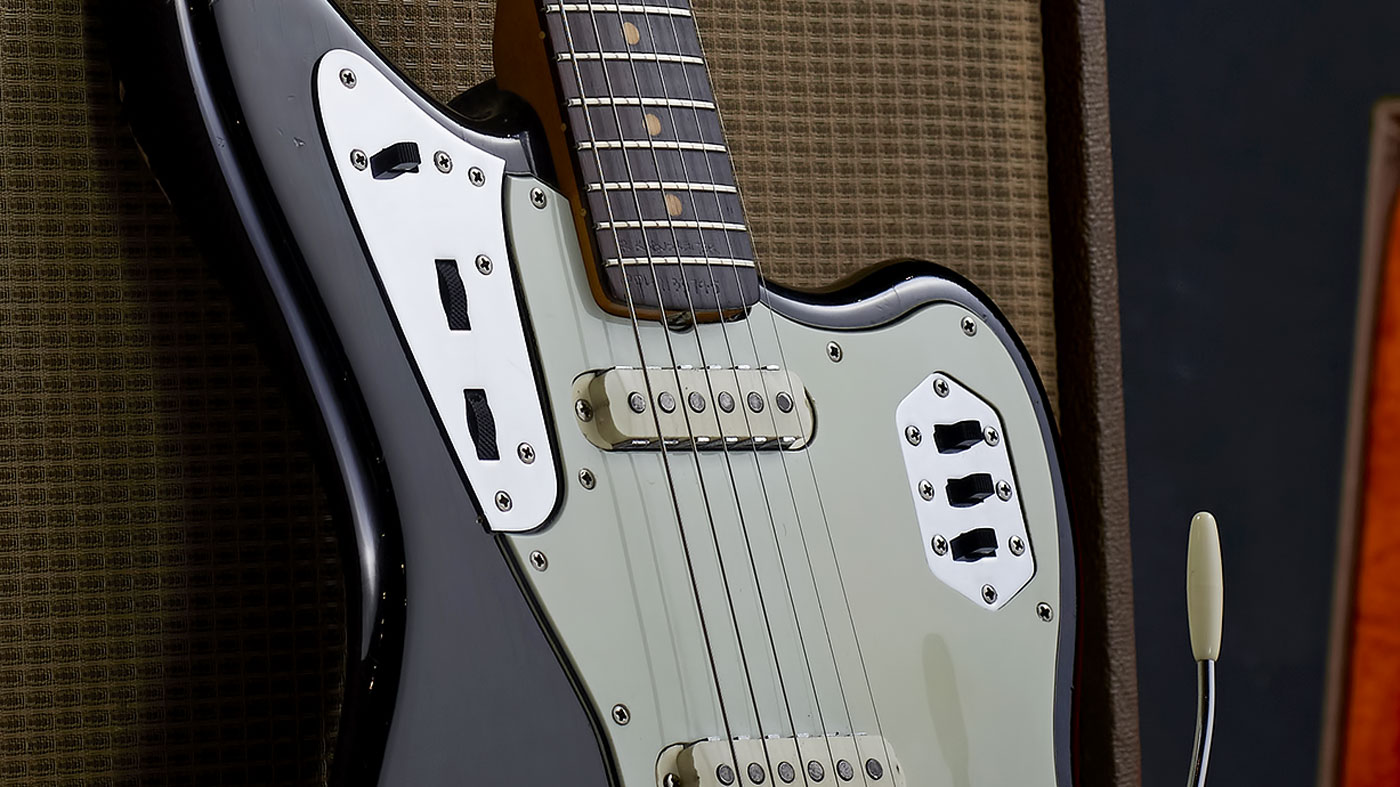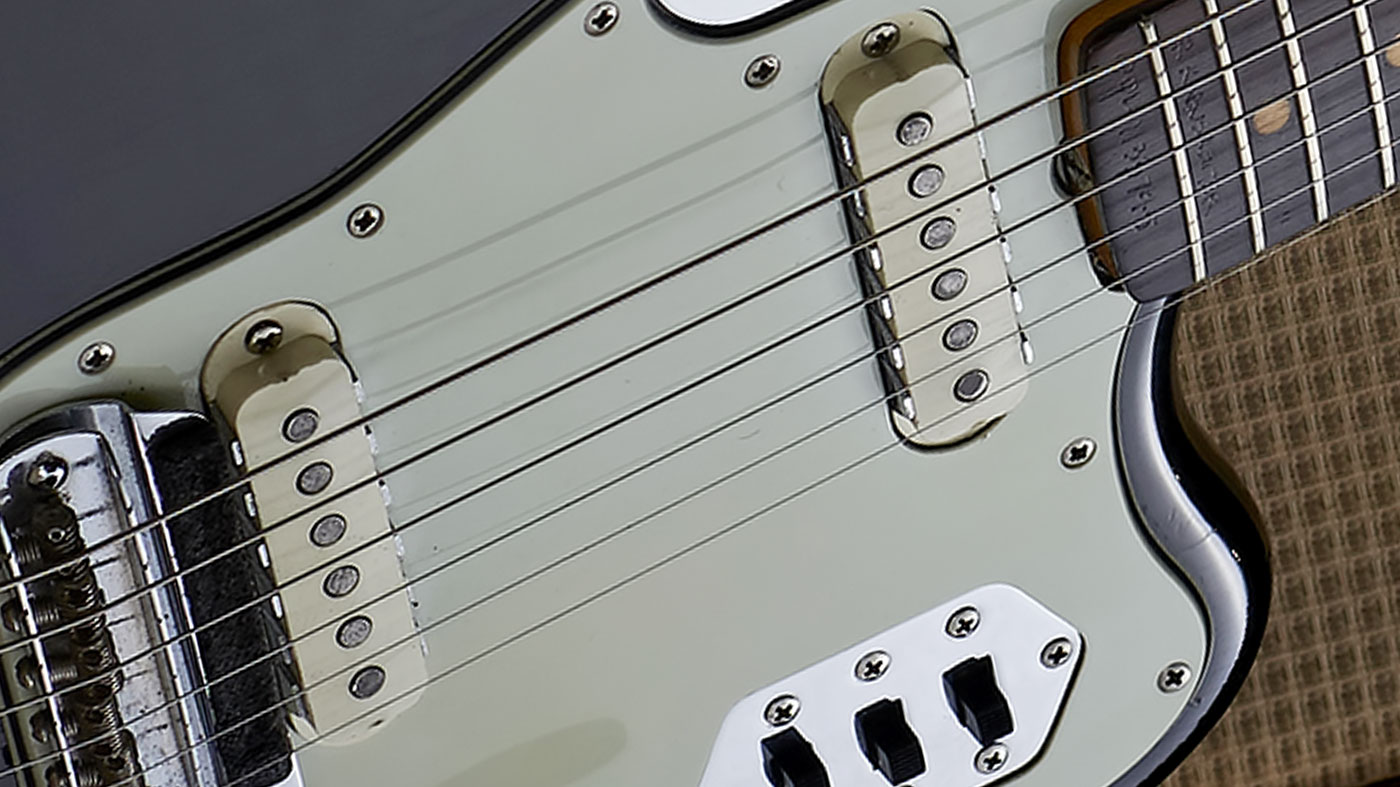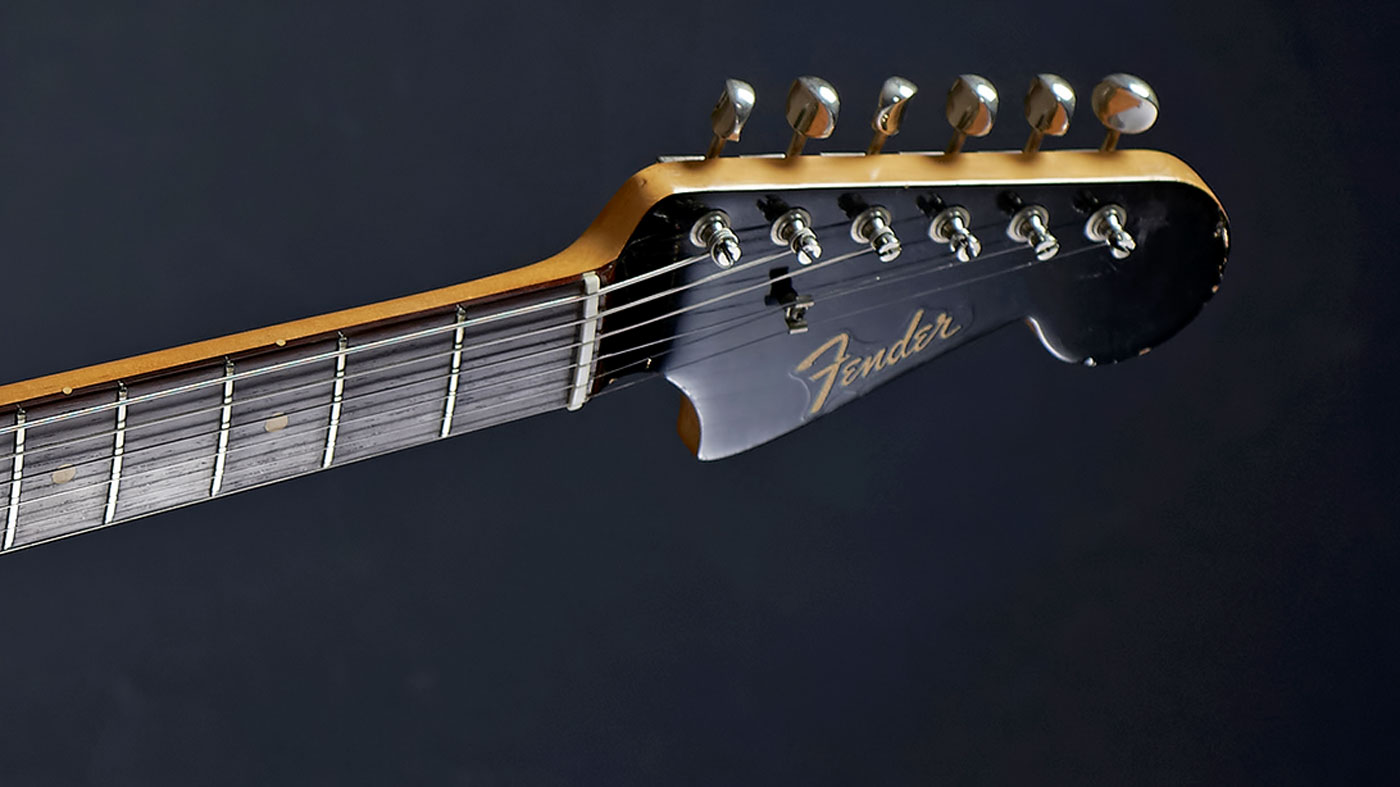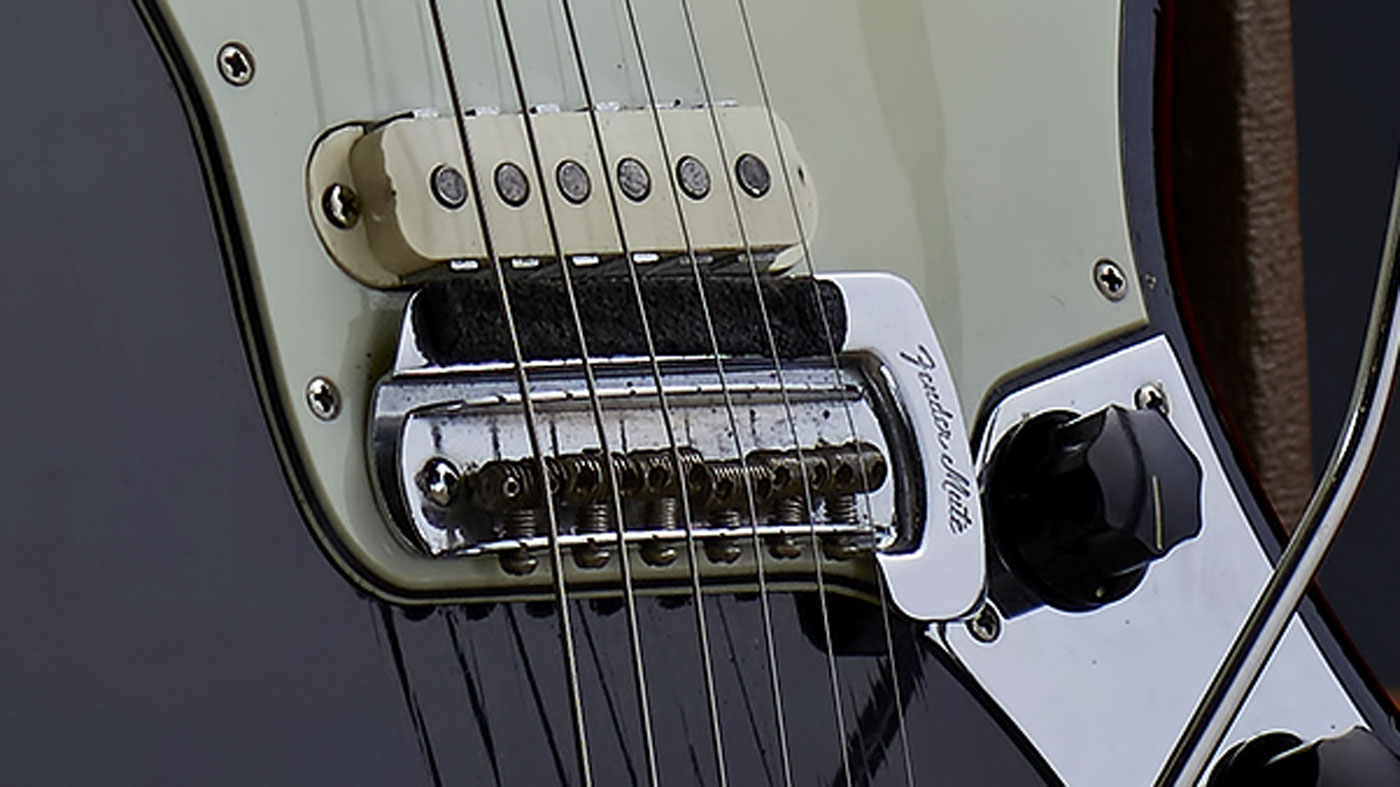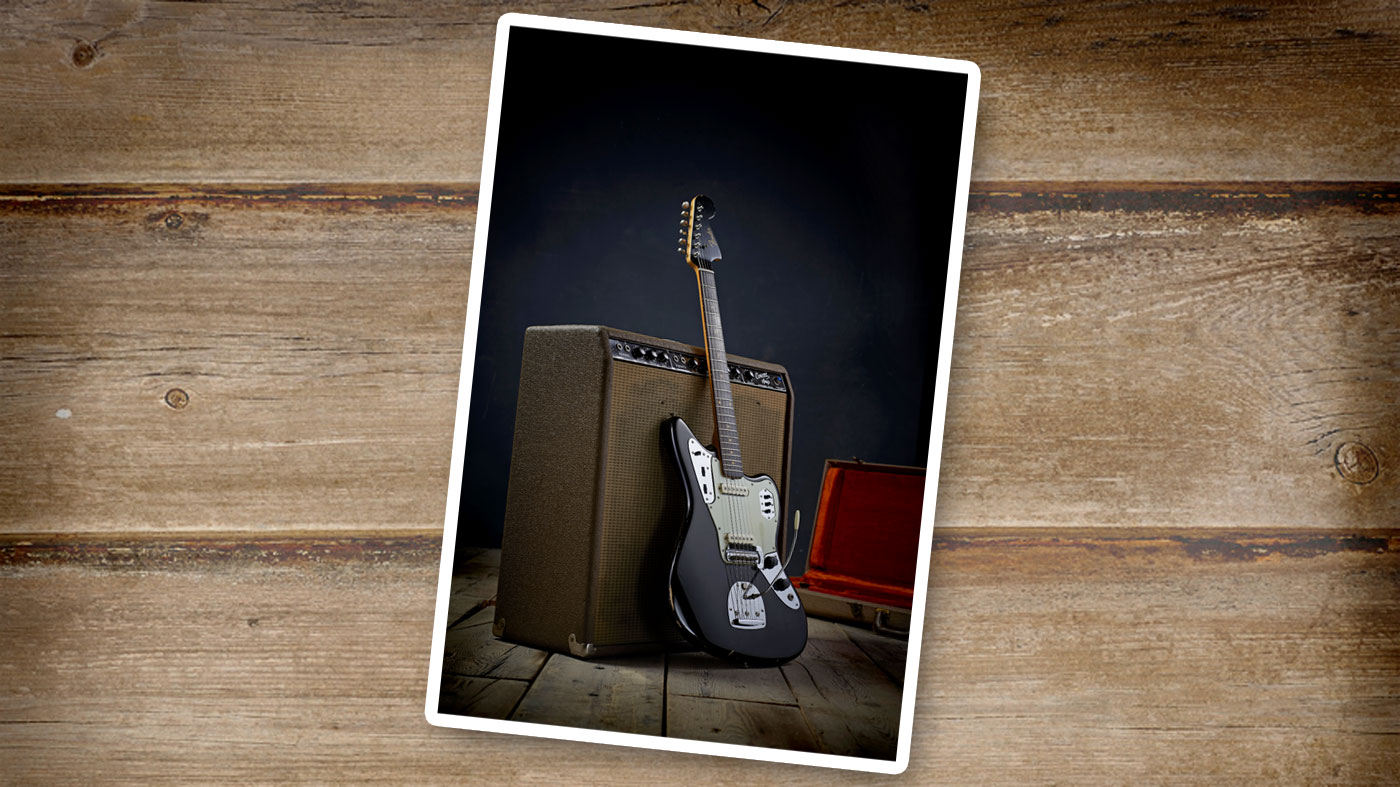
Introduction
The Jaguar was introduced in 1962 as a flagship for the Fender line. With a body design and features that borrowed heavily from the Jazzmaster (launched two years earlier), the Jaguar was seen initially as Leo Fender’s most sophisticated model yet.
Jaguars featured a short-scale neck, just 24 inches, as opposed to the Stratocaster’s and Telecaster’s 25.5-inch scale length, and they also had a 22-fret fingerboard.
The model shown here is a great example of the very early Jaguar: sleek, curvy and ready to catch a wave!
Initially aimed at guitarists on the very fashionable surf-music scene, the switch-laden Jaguar boasted twin circuits so that either lead or rhythm electronics could be employed.
The pickups also featured a metal claw-like surround that was said to enhance the efficiency of their magnets. Not quite so popular was the rubber pad just by the bridge, which could be levered into place by the player to mute the strings.
These quickly became known as tone-killers and were usually either removed or never used by the players of the day - certainly, they were generally not featured on subsequent reissues.
Other innovative ideas employed on the Jaguar included the ‘floating tremolo’, which Leo said was an improvement on his original design for the Stratocaster.
However, it had its shortcomings, with players complaining that it was difficult to mute the strings with their palms while playing, and its strings would occasionally pop out from the string saddles.
The Fender Jaguar reigned for 13 years, between 1962 and ’75, and was initially seen in the company of players like The Beach Boys’ Carl Wilson, but just after it was taken off the production line, it found a new lease on life in the hands of punk rock and New Wave players. A little later on, Thurston Moore and John Frusciante took up the cause before Nirvana’s Kurt Cobain came along and made the instrument his own.
The model shown here is a great example of the very early Jaguar: sleek, curvy and ready to catch a wave! (Guitar courtesy of Vintage Guitar Boutique, London).
Guitarist is the longest established UK guitar magazine, offering gear reviews, artist interviews, techniques lessons and loads more, in print, on tablet and on smartphones
Digital: http://bit.ly/GuitaristiOS
If you love guitars, you'll love Guitarist. Find us in print, on Newsstand for iPad, iPhone and other digital readers
